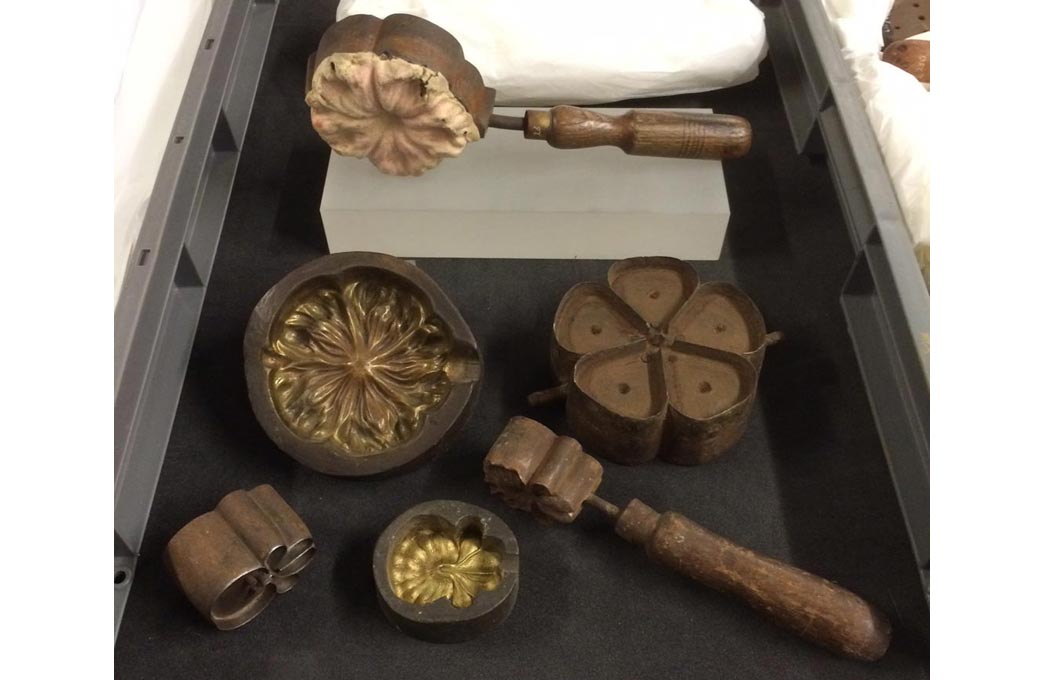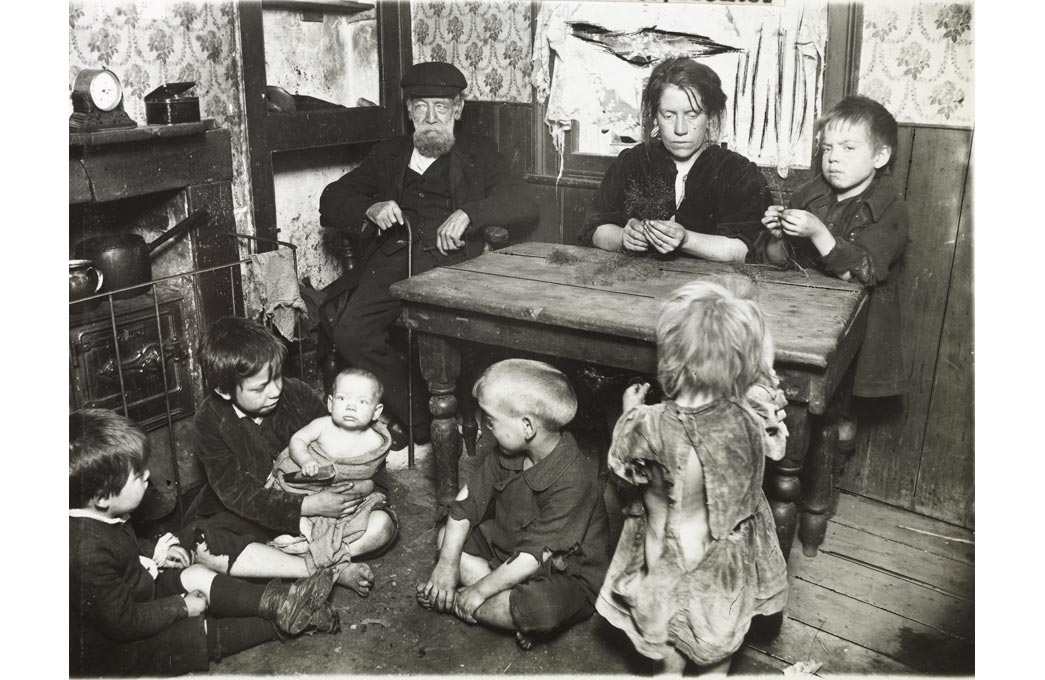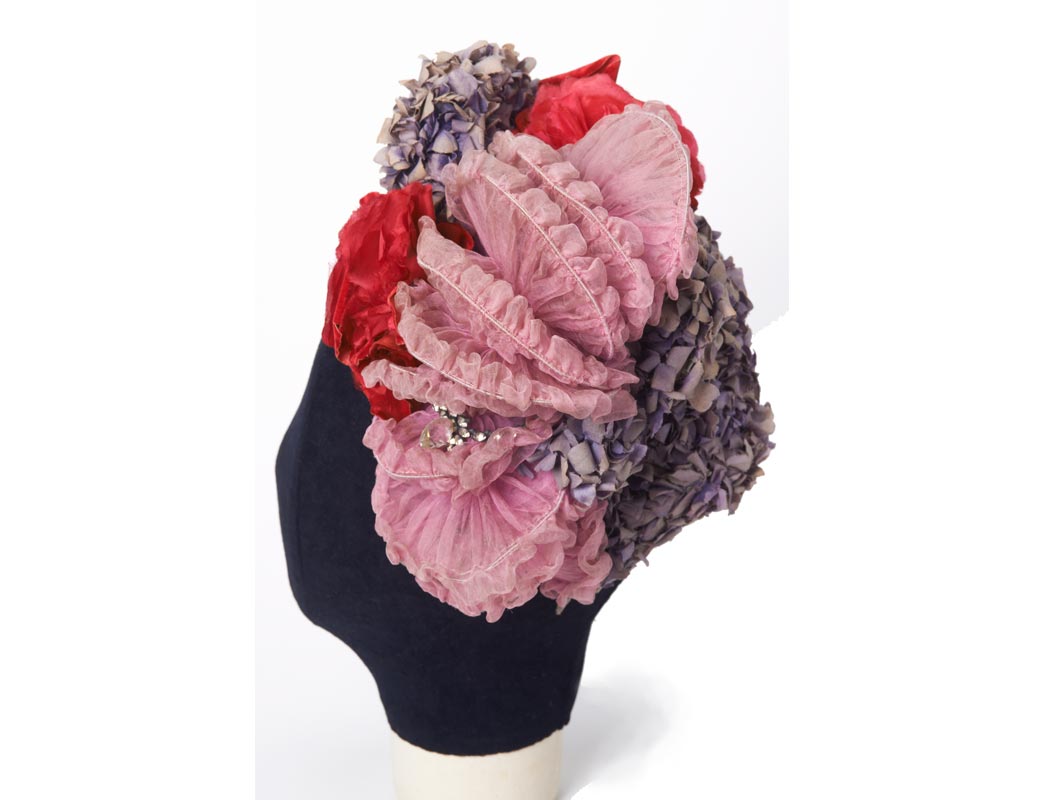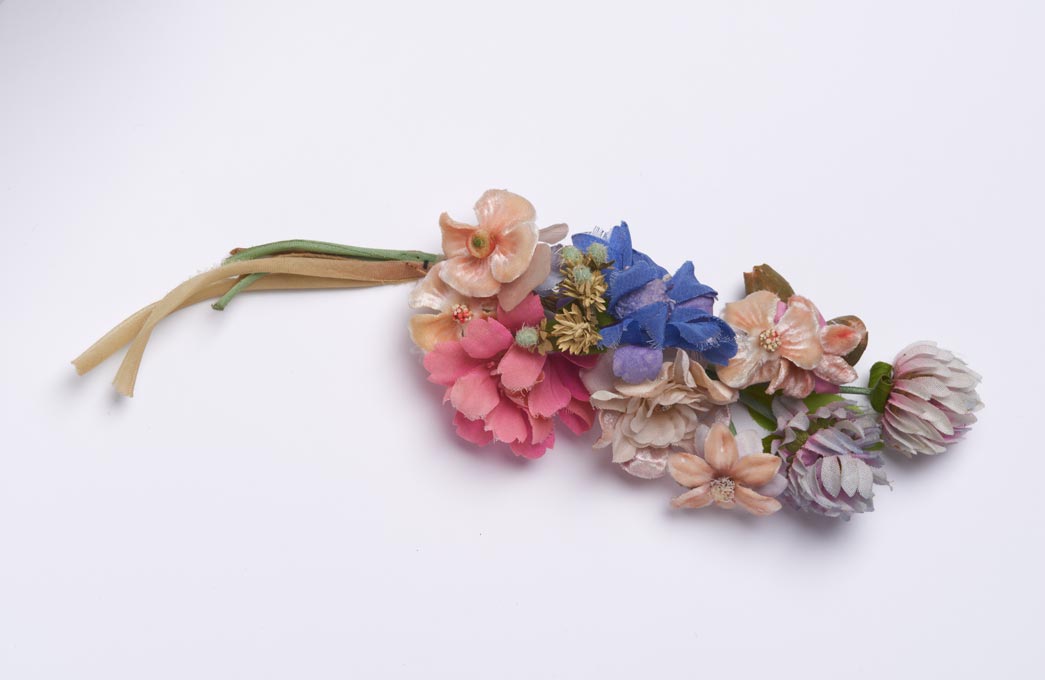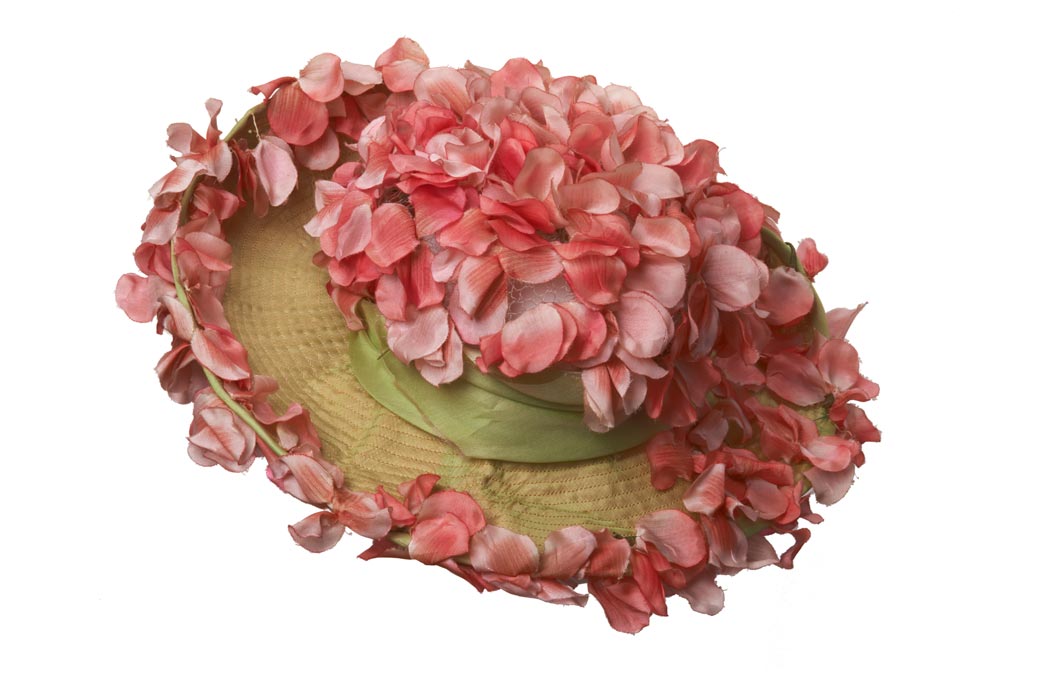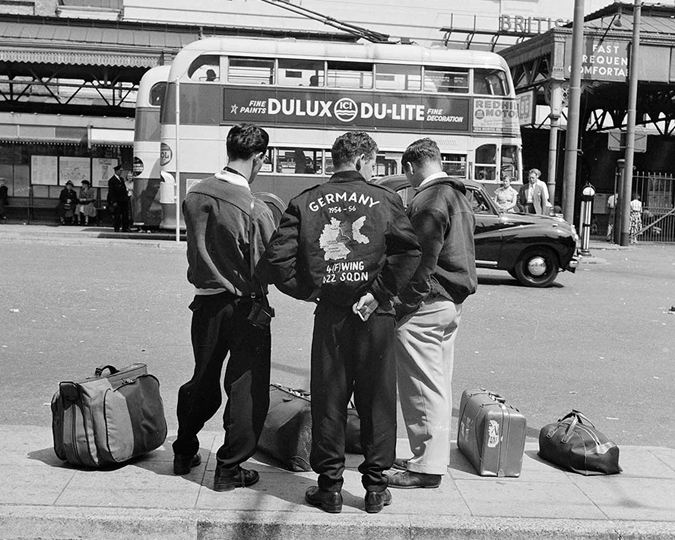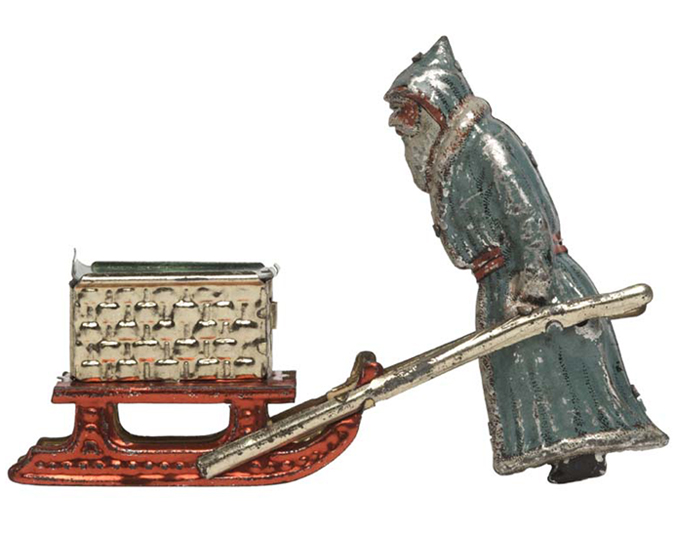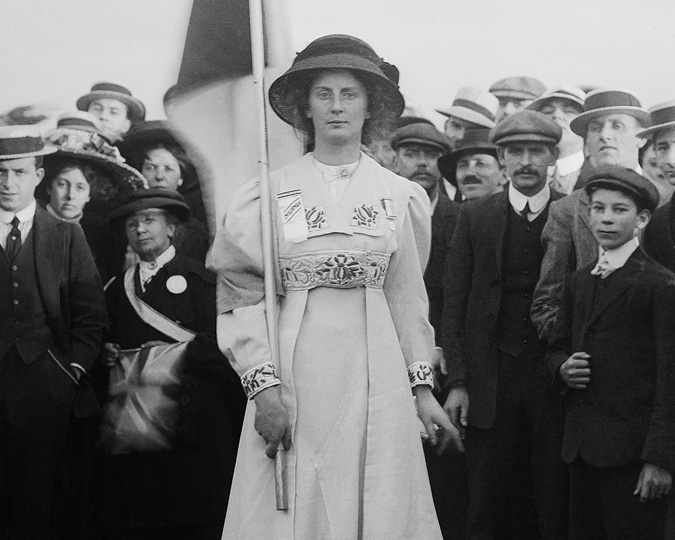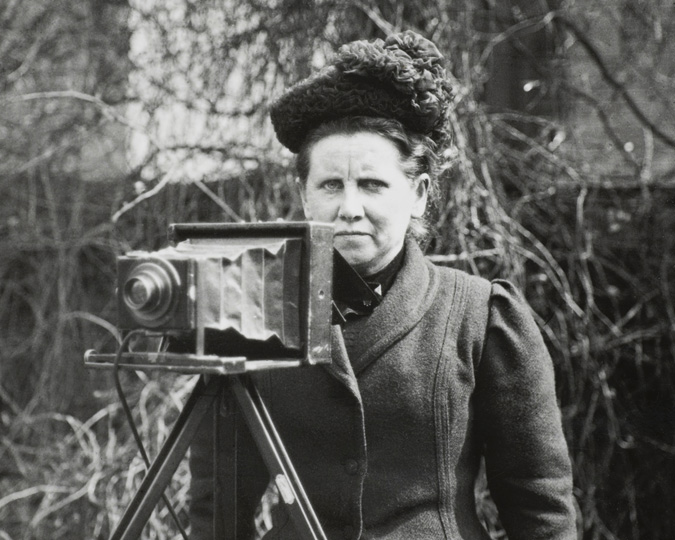In May 2016 we hosted a display at the Museum of London celebrating a lost art among London trades, the creation of hand-made artificial flowers. These astonishingly detailed, hand-assembled flowers were used to decorate dresses, bonnets and hats, several of which are included in the display. We’ve also displayed the tools used to make these flowers. This interview takes you into the vanished world of Victorian flower-makers with Beatrice Behlen, senior curator of fashion and decorative arts, and Natasha Fenner, curatorial assistant.
How were these flowers created?
Natasha: Well, they’d start with the fabric, and use these cutting tools to create the petal shapes. This was a physically demanding process – you’d have to strike the tool with a mallet, so this was mostly done by men. Then they would dye the fabric, and leave it to dry on porous sheets of paper.
Then the women took over. They would complete the veining process- the leaves of fabric were pressed in special moulds, to imprint them with the structure of a petal, the veins and texture. Every petal was shaped. Obviously real flowers have concave petals, not flat ones, so the flower-makers would have a tool with a round metal ball on the end, and heat it over a spirit lamp. Then they would press the petal to shape it around the ball.
That’s an incredibly complex process.
Natasha: Yes, it was extremely time-consuming. At the height of the trade, the 1891 census reported 4011 flower-makers in London.
Beatrice: That only created the petals, which then had to be assembled into the flower shapes, held in place with a stalk of twisted wire. You’d cover that stalk with paper or silk, and arrange the flowers into sprays or wreaths. This was a skilled job, you see workshops complaining that it would take several years to train a woman to do it right, and then she would leave to get married. Some of the work that didn’t require tools was done at home, often by women and children of poor families.
That is the dark side to these flowers: these beautiful objects which decorated expensive clothes were often produced by sweatshop labour. The Children’s Employment Commission of 1865 found that the majority of women assembling artificial flowers were under eighteen, with some starting as young as eight. Factories would employ over a hundred flower-makers at a time, working between twelve and, at the height of demand, eighteen hours a day.
Why was there so much demand?
Natasha: Well, it was a seasonal trade, with a boom during spring-time, when artificial flowers were most fashionable. That was also when the London season started, with women being presented at court and all the society events of the year beginning.
The flower-makers were tremendously competitive, they would flock to the West End shops as soon as the new year’s fashions arrived from Paris. They would race each other to have the first copies of those flower designs for sale.
Beatrice: It wasn’t just high society fashion, women from all walks of life would wear these flowers. It was a massive business because of decorating bonnets, it seemed like you couldn’t have a bonnet without artificial flowers on it, and of course women would cover their heads every time they left the house.
In our People’s City gallery we display artificial flowers, which were made in the Crippleage in Clerkenwell. This was the Flower Girl’s Christian Mission, where blind and disabled girls from around the City worked to make flowers that were sold for charity. They produced some of the first poppies for the Royal British Legion.
Natasha: Artificial flowers were used for interior decoration and set dressing as well. When you see an old picture of a Victorian living room, with a glass dome covering a vase of flowers? Those would often be artificial flowers, as would flowers in theatrical productions.
Why did the production of artificial flowers die out?
Beatrice: After the First World War, fashion changes dramatically. Women’s clothing becomes much more streamlined, the elaborate decorations of the late Victorian period were seen as fussy and old-fashioned. That and the disruption of the war undermined the British flower-making industry, and it became cheaper to import flowers from abroad.
Natasha: The once-thriving industry has shrunk to a tiny number of people. Some of the tools in the collection were donated by David Bloor, probably the last person practicing traditional Victorian flower-making in London. He produced set dressings for the Phantom of the Opera and other productions, wedding cake decorations, and so on, from a unit on an industrial estate in north London. But he found himself undercut by cheap foreign flowers and went out of business.
You can watch Last of the Flower Makers, a documentary about David Bloor, here.
Beatrice: Artificial flowers are having a major revival these days, you can see flower crowns – the archetypal festival gear being sold at stalls in various handicraft markets, that sort of thing. But after studying the flowers in our collection, some of these seem quite poorly made.
Cheap flower crowns are ruined for you. You’ve become an artificial flower snob.
Beatrice: Yes! Perhaps I should attend a course on making the original flowers – but I’m not sure mine would be any good. I suspect you need a lot of patience to get the technique right. This is a whole vanished world, of skill and workplace culture. The artificial flowers we have put on display are beautiful objects in their own right but they are also part of social history, of working history.
Natasha: We are telling every side of the story of the city, not just the story of the people who could buy these high-end clothes, but also of the people who made them. We too often overlook the creation of fashion, the work that goes into what we wear.
Love fashion? Subscribe to our free fashion newsletter to read more stories from our collections, and see upcoming events and exhibitions.








